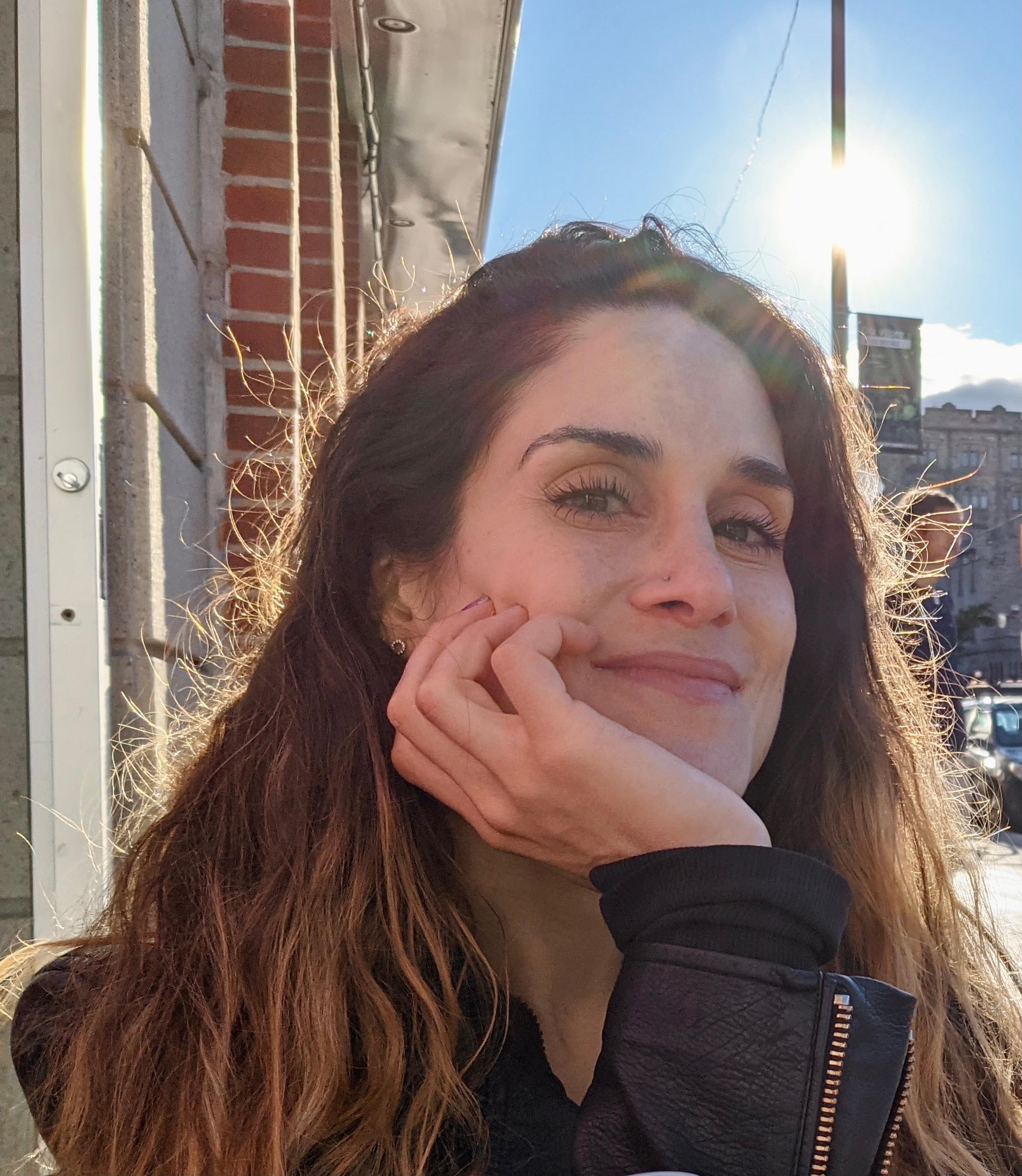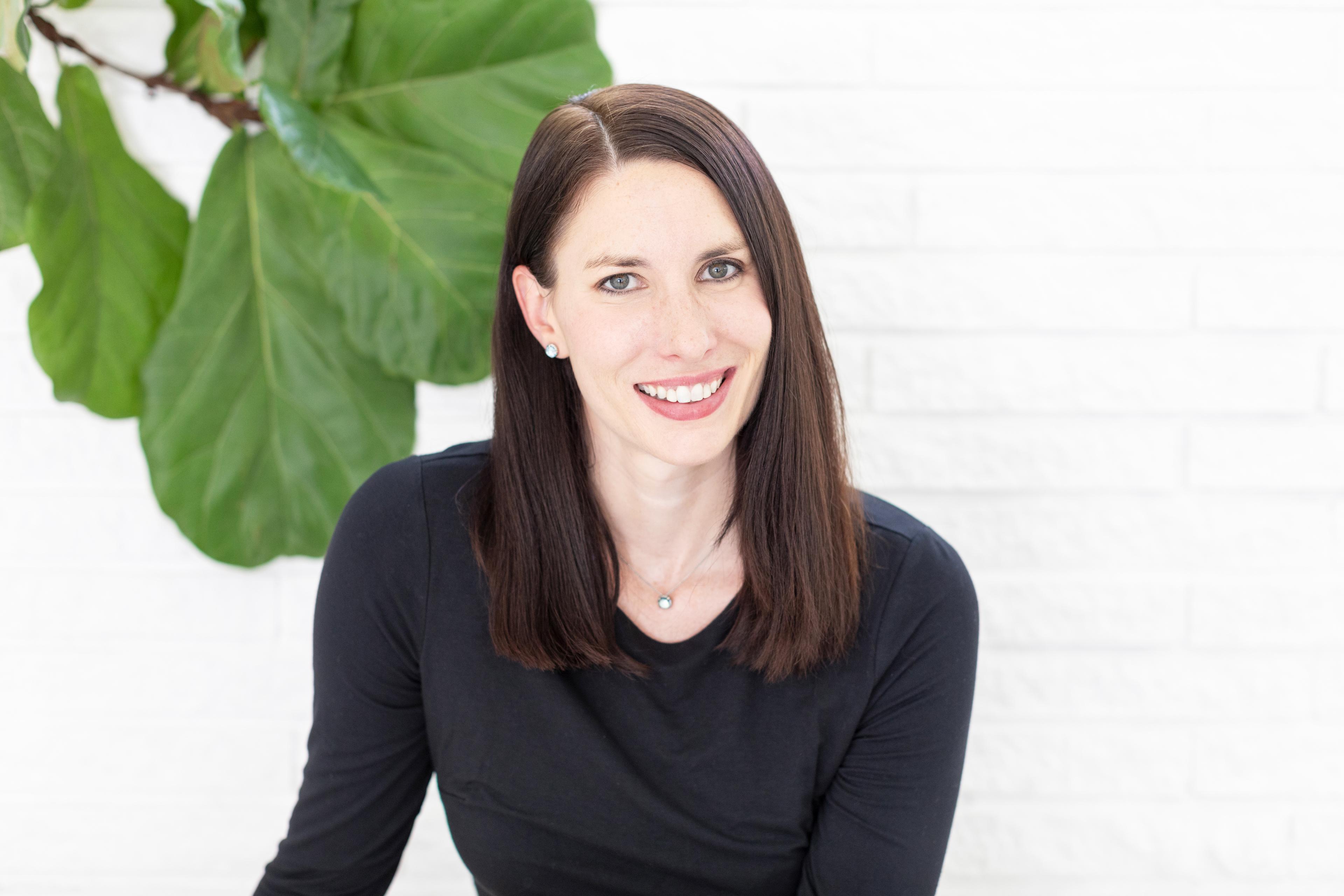


When Maris Degener first heard about family-based treatment (FBT), she didn’t believe it would stand a chance against her eating disorder. “I read about how the main focus in the beginning was on weight restoration and renourishment, and educating parents and family on how to make that happen by putting them fully in charge of meals,” says Degener, now Equip’s Director of Peer Mentorship. “My initial reaction was: ‘this is horrible.’”
In the depths of her disorder, Degener says the approach sounded overly simplistic, and she couldn’t see how it would motivate her to change if her parents were the ones making choices about her eating and exercise. “There was a long period of time when it all felt so counterintuitive to me and my family,” she recalls. “How would any of this ‘stick’ if I didn't want to recover?”
But once Degener and her family committed to FBT, they discovered what many others dealing with eating disorders have: the approach works, and it works well. While FBT requires significant time and emotional investment, research shows and experts agree that it leads to the best outcomes for young people with eating disorders. Read on to learn how FBT works and why experts continue to consider it the most effective approach to treating eating disorders in young people.
Introduction to family-based treatment (FBT)
Originally known as the Maudsley Method (because it was developed at London’s Maudsley Hospital), FBT is a treatment approach that empowers a patient’s family to take a central role in all aspects of their eating disorder recovery. Considered the gold standard for eating disorder treatment in children, adolescents, and young adults, FBT can be used to treat anorexia, bulimia, binge eating disorder (BED), and other specified feeding or eating disorder (OSFED). FBT can also be used to treat avoidant/restrictive food intake disorder (ARFID) in young people, although it is commonly paired with another form of treatment called cognitive behavioral therapy for ARFID (CBT-AR).
While experts endorse FBT as the best treatment approach for young people, a variation of the modality known as family-based treatment for transition age youth (FBT-TAY) may also be effective for older patients (ages 18 to 26) who can benefit from their family’s support in recovery.
The goal of FBT is to give patients the opportunity to recover in their familiar home environment, bolstered by their support system. When patients enter inpatient or residential treatment programs, they are inevitably separated from their parents, siblings, and other close supports— FBT helps prevent this separation, and allows all supports to play a pivotal role in recovery. This not only supports the treatment process, but also protects against relapse, as families are building a recovery-supporting environment at home and learning to use recovery skills in real life.
Because of its high success rate, FBT is usually our first line of treatment for young patients who come to Equip. Eating disorder treatment isn’t one-size-fits-all, however, so we offer a variety of different treatment modalities, including enhanced cognitive behavioral therapy (CBT-E) and dialectical behavioral therapy (DBT), in addition to FBT. Our model is dynamic and responsive, and we’ll adapt treatment plans as needed to best fit the unique needs of each patient and their family.
Understanding FBT: phases and process
In addition to the patient’s family playing an integral role in treatment, FBT differs from traditional talk therapy in its structure. Rather than talking about the causes of the issue in order to change behaviors, FBT targets eating disorder symptoms and behaviors first and then moves on to address psychological, emotional, and relational aspects later.
To accomplish this, FBT typically moves through three phases:
- Reduction of symptoms and weight restoration (when needed)
- Development of skills and independence
- Identity formation and relapse prevention.
“FBT takes what we all think we know about therapy—that you need to understand the roots of a problem and be motivated for change—and flips that on its head,” explains Equip’s VP of Behavioral Health Care, Angela Celio Doyle, PhD. “For eating disorders, particularly in young people, this is a monumental shift in approach that avoids having a child linger in a malnourished and sometimes medically dangerous state waiting for progress to happen.”
Phase 1: weight restoration and symptom reduction
Phase 1 of FBT is solely focused on restoring physical health, and family members play a crucial role in this. People with eating disorders often have a hard time making decisions about food and eating (and, in some cases, exercise); by temporarily putting those decisions in the hands of caretakers, FBT gives patients the opportunity to restore their physical well-being, which is an essential first step in the recovery process (as we often say, a malnourished brain doesn’t think clearly or process new information well, so it’s nearly impossible to make real progress in therapy without first renourishing the body).
During phase 1, parents or caretakers are responsible for making decisions around what, when, and how much their child eats, as well as monitoring food intake and helping reduce physical activity as needed. This phase continues until there is steady weight gain and eating disorder symptoms are beginning to show slight improvement.
Phase 2: development of skills and independence
During phase 2, patients are gradually given more responsibility over their eating. This process can happen in slow steps in order to avoid losing any progress. For example, rather than having parents plate and serve their child dinner every night, the child may begin to serve themselves dinner under the supervision of their parents.
Phase 3: identity formation and relapse prevention
Phase 3 focuses on reviewing the patient’s progress and assessing where they are developmentally. During this time, the patient and their family work closely with their treatment team to develop strategies to navigate the future and prevent relapse. The patient also begins to explore who they are outside of the eating disorder, strengthening their sense of identity and building a life worth living beyond their illness.

Why FBT works: the science behind its success
The research is clear: FBT works. But why, exactly, does it lead to such good outcomes? Let’s walk through some of the components that contribute to its effectiveness.
The role of nutrition and brain health
Nutrition plays an important role in FBT because a malnourished brain simply cannot participate in true recovery. By prioritizing the food part first—normalizing eating habits, sticking to a regular meal plan, gaining weight if needed—patients begin to naturally overcome some of the debilitating symptoms that keep them stuck in their disorder.
“A malnourished brain is wired to fixate on things like food, calories, weight, and shape, and typically eating disorder symptoms lessen as someone renourishes,” explains Equip’s VP of Medical Affairs, Katherine Hill, MD. “Once a patient is no longer malnourished, you start to see the light come back, and often comorbidities and behaviors dissipate without any additional treatment. These patients can then gradually regain full independence in eating with their family’s support.”
Psychological benefits of family involvement
While experts are still exploring the many different reasons why FBT is uniquely effective, eating disorder researcher Dori Steinberg, PhD, RD, says that there are a few key elements underlying its success. “It has the greatest potential for long lasting success because it builds confidence in parents to take care of their child,” she says. “We know from research that building confidence as early as two weeks in is associated with greater likelihood of success.”
The power of being in “real life”
Allowing patients to continue with routine aspects of their everyday lives while they receive treatment is another important aspect of FBT, according to Hill. “Often the first option given to families is residential treatment,” she says. “While residential treatment may be the right choice for some sicker patients, the beautiful thing about FBT is that it also allows young people to remain at home, in school, socializing with peers, and engaging in extracurricular activities.” Staying connected to the things that matter to them can help them stay motivated, while also helping them create a rich, full life outside of their illness.
Comparing FBT with other treatment methods
While FBT is the gold standard of eating disorder treatment for young people, there are a variety of other treatment modalities that can be used on their own or in combination with FBT for both young people and adults. A few of the most common treatment modalities include:
Enhanced cognitive behavioral therapy for eating disorders (CBT-E)
Enhanced cognitive behavior therapy (CBT-E, sometimes referred to as cognitive behavioral therapy for eating disorders) is considered one of the most effective treatments for eating disorders in adults. CBT-E is appropriate for most adults struggling with most eating disorders and is the standard of care for adults with anorexia, bulimia, binge eating disorder, and other specified feeding or eating disorder (OSFED). Consisting of four stages, CBT-E is based on the theory that our thoughts, emotions, and behaviors are all connected, and changing one of these elements will impact the others.
About two thirds of patients have a positive response to CBT-E, and the treatment has been found to be particularly effective for patients having difficulty with issues like mood intolerance, perfectionism, interpersonal difficulties, and low self-esteem. While CBT-E was developed as an outpatient treatment for adults, an augmented version was developed for adolescents that involves family members in treatment.
Dialectical behavior therapy (DBT)
DBT was initially developed to treat borderline personality disorder but is now used to treat a variety of mental health conditions, including eating disorders. As a form of talk therapy, DBT is rooted in the concepts of cognitive behavioral therapy (CBT), but specifically adapted to target intense emotions. “Dialectical” refers to the combination of two opposing ideas, so DBT helps patients integrate seemingly incompatible concepts and to accept their current realities while working toward positive changes.
DBT typically consists of four components:
- Weekly individual therapy
- Weekly skills group therapy
- Out-of-session phone coaching
- A consultation team for DBT therapists
Research has shown that DBT can be especially helpful in treating binge eating disorder (BED), with one study finding that 89% of participants who were taught DBT skills didn’t binge eat, compared with 12.5% in the control group. While FBT primarily targets weight restoration and normalizing eating patterns, DBT focuses on developing skills for coping with emotional dysregulation. Research has indicated that because the two approaches have varying strengths and limitations, they can work well in tandem to treat eating disorders.
Exposure and response prevention (ERP)
Considered the gold standard for treatment of obsessive-compulsive disorder (OCD), exposure and response prevention (ERP) is a type of CBT that focuses on helping patients overcome fears. In the context of eating disorders, ERP can be used to help patients face their fears around food, weight gain, and other issues, and help them avoid urges that lead to eating disorder behaviors. During ERP, patients work closely with a trained professional to incrementally confront certain fears, building resilience and reducing anxiety through exposure.
Misconceptions about FBT
FBT is the most effective treatment for eating disorders in young people, but it does come with some challenges. While some of the hurdles are valid and worth being aware of, others are rooted in myths and misconceptions about FBT. Here’s how to separate truth from fiction:
Myth #1: FBT is only appropriate for certain types of families
“It is not a prerequisite to come from an affluent household with two married parents to be successful in FBT,” Hill says. “‘F’ stands for family, but ‘family’ looks different for everyone. I have had patients with great outcomes from virtually every kind of household: single-parent households, divorced households, foster care, lower income households, and households that don’t speak English.” In fact, an Equip study showed that FBT works equally well for families of all different configurations and demographics.
Myth #2: FBT doesn’t address the root cause of an eating disorder
While FBT is an “agnostic” approach (i.e. it works regardless of the underlying cause of a person’s eating disorder), it can and does address the different factors that might contribute to an eating disorder. The approach is based on the belief that an eating disorder can be effectively treated: 1) without knowing the exact cause, and 2) by renourishing the patient and reducing active engagement in disordered behaviors. “It was really revolutionary for me to learn that simply not eating enough and not weighing enough for your body makes eating disorder symptoms worse,” Degener says. “At the root of everything, my body and brain were undernourished, and that makes everything harder, including doing things like body image work.” Once patients have reduced eating disorder behaviors and become renourished, patients can more effectively work with their team to target specific emotional, psychological, or relational challenges.
Myth #3: Recovery isn’t possible unless treatment takes place in a dedicated treatment facility
Because FBT allows patients to recover in the comfort and familiarity of their own environments, it eliminates the need to remove patients from their everyday lives and empowers loved ones to play an active role in supporting treatment. Additionally, through FBT, parents and caregivers get the opportunity to build confidence in their ability to care for their child, which can help ensure success in recovery. In many ways, FBT is effective because it doesn’t happen in a dedicated treatment facility. Check out these tips for parents in FBT.

The Equip takeaway: The path to recovery with FBT
Despite the challenges, Degener says FBT was truly life-saving. “What we know now is that an eating disorder can be so self-eclipsing that it is incredibly difficult to choose recovery entirely on your own, without the support of others,” she says. “I really resonate with the saying that ‘treatment that works rarely feels good,’ and as humans, we don’t tend to go out of our way to do anything that doesn't feel good, especially something as incredibly difficult as recovering from an eating disorder.”
As Degener articulates so well, FBT may be hard, but it’s precisely because it’s hard that it works. Here’s what to remember about the FBT approach to treating eating disorders:
- Family-based treatment (FBT), previously known as the Maudsley method, is the gold standard for eating disorder treatment in young people. A large body of research supports its effectiveness, showing it leads to the best outcomes.
- FBT is an effective treatment for anorexia, bulimia, BED, and OSFED. It can also be used to treat ARFID, though it is commonly paired with CBT-AR.
- FBT empowers a patient’s healthy family members to take a primary role in treatment. Loved ones are tasked with helping renourish the patient by taking control of their eating and stopping disordered behaviors.
- FBT is cause-agnostic, meaning that it addresses behaviors and symptoms rather than trying to find the “root cause” of an eating disorder. After a patient has become renourished and stopped disordered habits, many psychological and emotional symptoms go away on their own. When additional therapy or other work is needed, their brain is in a better place to effectively tackle that work.
- FBT consists of three phases, which gradually transfer independence back to the patient.
- FBT can be used on its own, or in conjunction with another treatment modality, like CBT, DBT, or ERP.
- FBT works equally well for families of all configurations and demographics.
If you’re concerned a loved one might have an eating disorder and want to learn more about FBT at Equip, schedule a call with a member of our team. You can talk through your concerns, learn more about what FBT would look like for your family, and explore treatment options.
FAQ
What is family-based treatment (FBT) and how does it work?
FBT is a treatment approach for young people with eating disorders where family members take a central role. Parents or other loved ones are tasked with renourishing their loved one and stopping disordered habits. FBT has three phases, during which the patient gradually gains more independence and eventually regains control of their eating.
Why is FBT considered the most effective treatment for eating disorders in young people?
A large body of research shows that FBT leads to the best outcomes in treating young people with eating disorders. There are several reasons for this, but a primary one is that FBT first works on renourishing the patient and stopping disordered behaviors, which naturally alleviates many of the other psychological and emotional symptoms of eating disorders. Once patients have become physically rehabilitated, they’re better equipped to tackle the mental component of treatment. FBT also allows patients to recover at home, with their loved ones, so that they can develop and use skills in real life and create a recovery-supporting environment at home, which helps protect against relapse.
What are the phases of FBT and what do they involve?
The three phases of FBT are:
1. Phase one: reduction of symptoms and weight restoration (when needed)
2) Phase two: development of skills and independence
3) Identity formation and relapse prevention
As families progress through the different phases, the patient gradually becomes more independent and the focus shifts from stopping disordered behaviors to relapse prevention and building a life outside of the eating disorder.
How does FBT compare to other treatment methods like CBT-E and DBT?
CBT and DBT are both treatment approaches that use talk therapy to address the eating disorder, whereas FBT is a framework that focuses on renourishing the patient, normalizing eating habits, and stopping disordered behaviors. Both CBT and DBT can be used alongside FBT. For adults with eating disorders, CBT-E (enhanced cognitive behavioral therapy) is the front-line treatment approach, whereas DBT is extremely helpful for building distress tolerance and helping patients develop coping skills that can reduce their reliance on disordered behaviors.
- Agras, W. Stewart, Ellen E. Fitzsimmons-Craft, and Denise E. Wilfley. 2017. “Evolution of Cognitive-Behavioral Therapy for Eating Disorders.” Behaviour Research and Therapy 88 (January): 26–36. https://doi.org/10.1016/j.brat.2016.09.004.
- Anderson, Leslie K., Stuart B. Murray, Ana L. Ramirez, Roxanne Rockwell, Daniel Le Grange, and Walter H. Kaye. 2015. “The Integration of Family-Based Treatment and Dialectical Behavior Therapy for Adolescent Bulimia Nervosa: Philosophical and Practical Considerations.” Eating Disorders 23 (4): 325–35. https://doi.org/10.1080/10640266.2015.1042319.
- Atwood, Molly E., and Aliza Friedman. 2019. “A Systematic Review of Enhanced Cognitive Behavioral Therapy (CBT‐E) for Eating Disorders.” International Journal of Eating Disorders 53 (3): 311–30. https://doi.org/10.1002/eat.23206.
- Bardone‐Cone, Anna M., Alexandra J. Miller, Katherine A. Thompson, and Emily C. Walsh. 2020. “Predicting a Comprehensive Operationalization of Eating Disorder Recovery: Examining Self‐Concept , Personality, and Negative Affect.” International Journal of Eating Disorders 53 (6): 987–96. https://doi.org/10.1002/eat.23281.
- Couturier, Jennifer, Melissa Kimber, and Peter Szatmari. 2012. “Efficacy of Family-Based Treatment for Adolescents with Eating Disorders: A Systematic Review and Meta-Analysis.” International Journal of Eating Disorders 46 (1): 3–11. https://doi.org/10.1002/eat.22042.
- Dalle Grave, Riccardo, Simona Calugi, Helen A. Doll, and Christopher G. Fairburn. 2013. “Enhanced Cognitive Behaviour Therapy for Adolescents with Anorexia Nervosa: An Alternative to Family Therapy?” Behaviour Research and Therapy 51 (1): R9–12. https://doi.org/10.1016/j.brat.2012.09.008.
- Grange, Daniel LE. 2005. “The Maudsley Family-Based Treatment for Adolescent Anorexia Nervosa.” World Psychiatry 4 (3): 142. https://pmc.ncbi.nlm.nih.gov/articles/PMC1414759/.
- Rienecke, Renee. 2017. “Family-Based Treatment of Eating Disorders in Adolescents: Current Insights.” Adolescent Health, Medicine and Therapeutics Volume 8 (8): 69–79. https://doi.org/10.2147/ahmt.s115775.
- Telch, C. F., W. S. Agras, and M. M. Linehan. 2001. “Dialectical Behavior Therapy for Binge Eating Disorder.” Journal of Consulting and Clinical Psychology 69 (6): 1061–65. https://doi.org/10.1037//0022-006x.69.6.1061.







